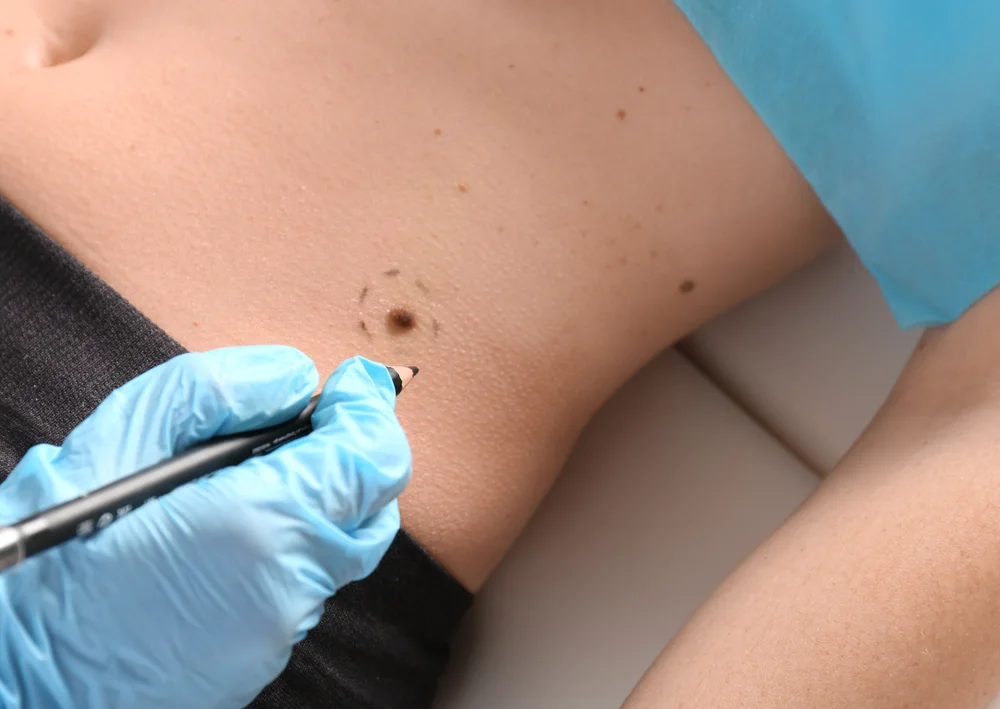Precision Where It Matters Most: The Value of a Board - Certified Mohs Surgeon
Seeing Beyond the Surface
Skin cancer is often treatable, but it can be hard to deal with. What you see on the outside may only give you a hint of how it grows on the inside. When lesions are close to the nose, lips, or eyes, or when they come back after treatment, precision is very important. Mohs micrographic surgery is the only way to track and remove cancer layer by layer, with the help of real-time microscopic examination. But the procedure is only as good as the people who do it.
This is when board certification in Mohs surgery goes from being a credential to being a protection.
A Closer Look at Mohs Surgery
The technique itself is both methodical and meticulous. After local anesthesia is administered, the visible tumor is carefully excised with a small margin of surrounding skin. That tissue is then processed immediately on site, where the surgeon—trained not only to operate but also to interpret slides under a microscope—examines the margins for any remaining cancer cells.
If residual cancer is found, the process continues—but only in the precise area where cells persist. Healthy tissue remains untouched. This staged approach, while requiring patience, allows for maximal tissue preservation and extraordinary cure rates—often exceeding 98% for primary basal cell carcinomas.
The Significance of Board Certification
Not all surgeons who do Mohs surgery are certified to do it. The American Board of Dermatology sets strict standards for people who want to become board-certified in Micrographic Dermatologic Surgery. Only those who complete advanced, specialized training can do this. Board certification ensures:
- Expertise in surgery and dermatopathology
- Skill in complex facial reconstruction
- Comprehensive training under strict standards
It also signals something subtler: a depth of commitment to this form of cancer treatment that few disciplines require. The surgery, the microscopic review, the reconstruction—all are performed by the same clinician, often within a single day. In such a setting, continuity of skill matters greatly.
A Blend of Science and Art
Mohs surgery is as much about aesthetic preservation as it is about medical thoroughness. Nowhere is this balance more evident than in the face—where even millimeters can change expression, symmetry, or function.
A board-certified Mohs surgeon brings a comprehensive understanding of both oncologic behavior and cosmetic architecture. Whether closing a wound with fine-layered sutures or designing a local flap to blend with natural contours, the goal remains the same: complete cancer removal with as little disruption to appearance and function as possible.
Who Benefits Most
While Mohs surgery is appropriate for many types of nonmelanoma skin cancer, it is most commonly recommended for:
- Tumors in cosmetically or functionally sensitive areas (nose, lips, eyes)
- Cancers with indistinct borders
- Lesions that have recurred after prior treatment
- Cases where tissue conservation is critical (hands, ears, lower legs)
Candidacy is determined case by case. A thorough consultation allows for a discussion of medical history, tumor characteristics, and treatment goals. For some, a simpler excision or non-surgical option may suffice. For others, especially when precision is critical, Mohs provides a level of assurance that few techniques can match.
Aftercare and Long-Term Outcomes
After surgery, the focus is on healing. Most of the time, patients can go home the same day. Stitches are typically removed within one to two weeks, and swelling or redness fades with time. Because the wound has been closed only after all cancer was confirmed removed, the likelihood of recurrence is exceptionally low.
Still, surveillance remains important. Patients with a history of skin cancer should be monitored regularly for new or changing lesions. Key aftercare includes:
- Routine follow-up visits
- Consistent sun protection
- Monitoring for new lesions
Healing may be swift, but vigilance is ongoing.
In Reflection
When a skin cancer diagnosis is placed in experienced hands, the path forward becomes clearer. Mohs surgery, guided by a board-certified specialist, offers the rare intersection of science, precision, and care—ensuring not only that the cancer is gone, but that what remains is preserved with intention.
Schedule a Consultation
For expert care guided by board-certified training in Mohs surgery, call (406) 702-1323 to schedule a consultation.



